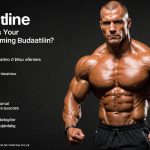In striving for excellence in sports, athletes often focus on refining their skills, tactics, and strategies. However, a key ingredient to success that is often overlooked is the athlete’s physical condition. For seasoned athletes, maximizing muscle growth can provide the necessary edge to outperform their competitors. But how can muscle growth be enhanced beyond the usual workout routines? Let’s explore advanced techniques that can promote muscle growth and strength in seasoned athletes.
The Importance of Strength Training
Strength training enhances the physical power and endurance of an athlete, key factors in the performance of most sports. It involves exercises that challenge muscles by applying more weight or resistance than they are accustomed to. This resistance encourages the muscles to grow stronger and larger over time, improving both athletic performance and physique.
Also to discover : How do different types of muscle fibers respond to various workouts?
Training Volume and Load
A common mistake made during strength training is prioritising weight load over training volume. The weight load refers to the amount of weight lifted during a workout, while training volume refers to the total number of reps and sets performed. To optimize muscle growth, it is beneficial to balance both elements.
Research suggests that performing more reps with moderate weight can be more effective for muscle growth than fewer reps with heavier weights. Hence, incorporating more sets with a manageable weight is advisable.
This might interest you : What is the role of genetics in your bodybuilding success?
Progressive Overload
The concept of progressive overload is another advanced technique geared towards muscle growth. This technique involves gradually increasing the resistance level in your workouts over time. The goal is to consistently challenge your muscles, which encourages them to adapt and grow stronger.
Keep in mind that progressive overload doesn’t solely refer to increasing weight. It can also mean boosting reps, sets, or workout frequency. The key lies in continually pushing your limits in a safe and controlled manner to stimulate muscle growth.
Integrative Body Recovery
Post-workout recovery is as crucial to muscle growth as the workout itself. Proper recovery ensures that your muscles heal and grow stronger after being subjected to strenuous exercises.
Adequate Rest Time
A common misconception among athletes is that you must train daily to gain results. However, rest is vital for muscle recovery and growth. When you exercise, you cause microscopic damage to your muscle fibers. Your body repairs and strengthens these fibers during rest, leading to muscle growth.
Therefore, ensure you have adequate rest days in between workout sessions. Listen to your body and don’t push through pain or extreme fatigue, as this can lead to injury and hinder your performance.
Nutrition for Recovery
Proper nutrition is an integral part of muscle recovery. Consuming a balanced diet rich in protein helps repair and build muscle tissue. Additionally, carbohydrates replenish the glycogen stores depleted during workouts, aiding muscle recovery.
Consider consulting a sports nutritionist who can provide personalized nutrition advice tailored to your training regimen and body’s needs.
Incorporating Resistance Exercises
Resistance exercises are a valuable tool for muscle growth. They are exercises that make your muscles work against a weight or force. This tension stimulates muscle growth by causing damage to the muscle fibers, which your body then repairs.
Compound Exercises
Compound exercises are multi-joint movements that work several muscles or muscle groups at a time. Examples include deadlifts, squats, or bench presses. These exercises are beneficial for building muscle mass and strength because they allow you to lift heavier weights and work more muscles at once.
Resistance Bands
Another effective way to incorporate resistance into your workouts is by using resistance bands. These bands offer constant tension throughout your exercises, which can lead to improved muscle growth. They are also versatile and portable, making them a great addition to any workout routine.
High-Intensity Interval Training (HIIT)
High-Intensity Interval Training (HIIT) is a form of cardio workout that alternates between intense bursts of activity and short recovery periods. It’s proven to boost muscle growth, improve athletic performance, and enhance cardiovascular fitness.
Short, Intense Workouts
Unlike traditional endurance cardio, HIIT involves short, intense workouts – often lasting only 20-30 minutes. Still, these sessions can deliver significant improvements in muscle growth and overall fitness due to their high intensity.
Variety of Exercises
HIIT workouts involve a variety of exercises, from sprinting and cycling to bodyweight exercises. This variety not only prevents workout monotony but also allows different muscle groups to be targeted, promoting balanced muscle growth.
Remember, boosting muscle growth as a seasoned athlete involves more than just training hard. It requires a strategic approach that combines advanced strength training techniques, proper recovery, and varied resistance exercises, along with HIIT workouts. By implementing these advanced techniques into your regimen, you’re well on your way to achieving your athletic goals.
Functional Training for Enhanced Athletic Performance
Functional training is an advanced technique that focuses on exercises mimicking the movements involved in an athlete’s specific sport. This type of training can stimulate muscle growth and enhance athletic performance by targeting the specific muscle groups used most in the respective sport.
Sport-Specific Exercises
Incorporating sport-specific exercises into your workout regimen can help to improve your functional strength and, consequently, your performance in the sport. These exercises target the muscle groups that are most heavily used in the sport, promoting effective muscle growth. For instance, a basketball player might incorporate jump squats into their routine to enhance their vertical leap, while a sprinter might focus on exercises that strengthen their hamstrings and glutes.
Minimizing Risk of Injury
Functional training not only promotes muscle growth and athletic performance but can also help to minimize the risk of injury. By improving strength and coordination in the specific muscle groups used in the sport, athletes can protect themselves from common injuries associated with their sport.
Rest-Pause Technique for Optimal Muscle Building
The rest-pause technique is another advanced method for maximizing muscle growth. It involves performing an exercise to failure, resting for a few seconds, and then continuing to perform the exercise for as many reps as possible. This technique stresses the muscle fibers and stimulates muscle growth.
Achieving Muscle Fatigue
The purpose of the rest-pause technique is to achieve muscle fatigue, which occurs when a muscle group has been worked to the point where it can no longer perform the exercise correctly. When a muscle reaches this level of fatigue, it stimulates the body’s growth responses, leading to increased muscle mass.
Short Rest Periods
Rest-pause sets involve short rest periods of around 20-30 seconds in between bouts of exercise. These short rest periods allow for the rapid recycling of the energy needed for high-intensity efforts, allowing you to maintain a high level of intensity throughout your workout.
Conclusion
Increasing muscle growth in seasoned athletes requires a combination of advanced and strategic techniques. Strength training that balances load and volume, progressive overload, functional training, and the rest-pause technique are all advanced methods that can stimulate muscle growth. Incorporating resistance exercises, like compound exercises and exercises with resistance bands, along with high-intensity interval training, can also promote muscle mass growth and enhance athletic performance.
Remember that proper recovery, involving adequate rest time and proper nutrition, is paramount to muscle growth and the prevention of injuries. By incorporating these advanced techniques and recovery methods into a well-rounded and sport-specific regimen, seasoned athletes can maximize their muscle growth and achieve their athletic goals.






